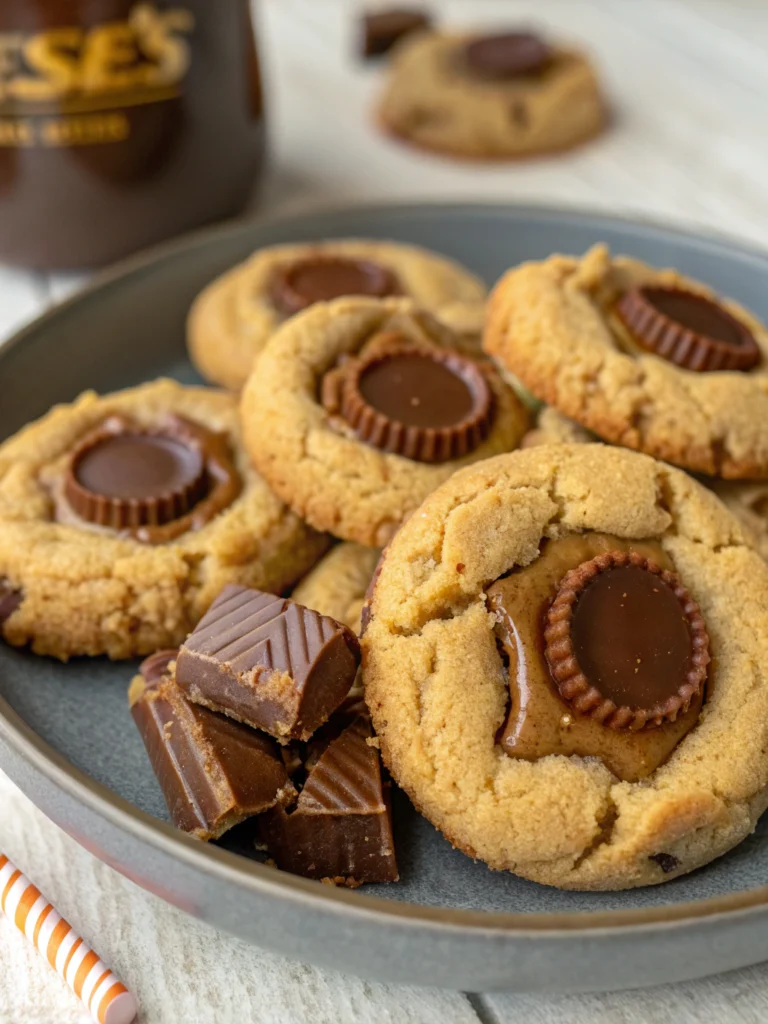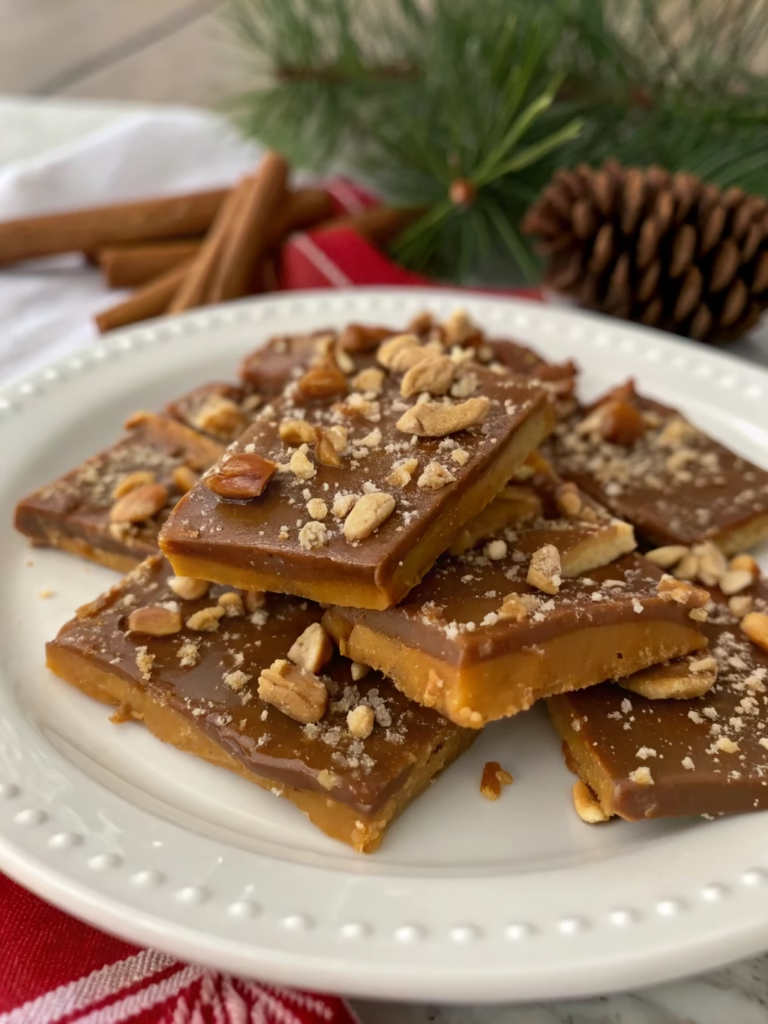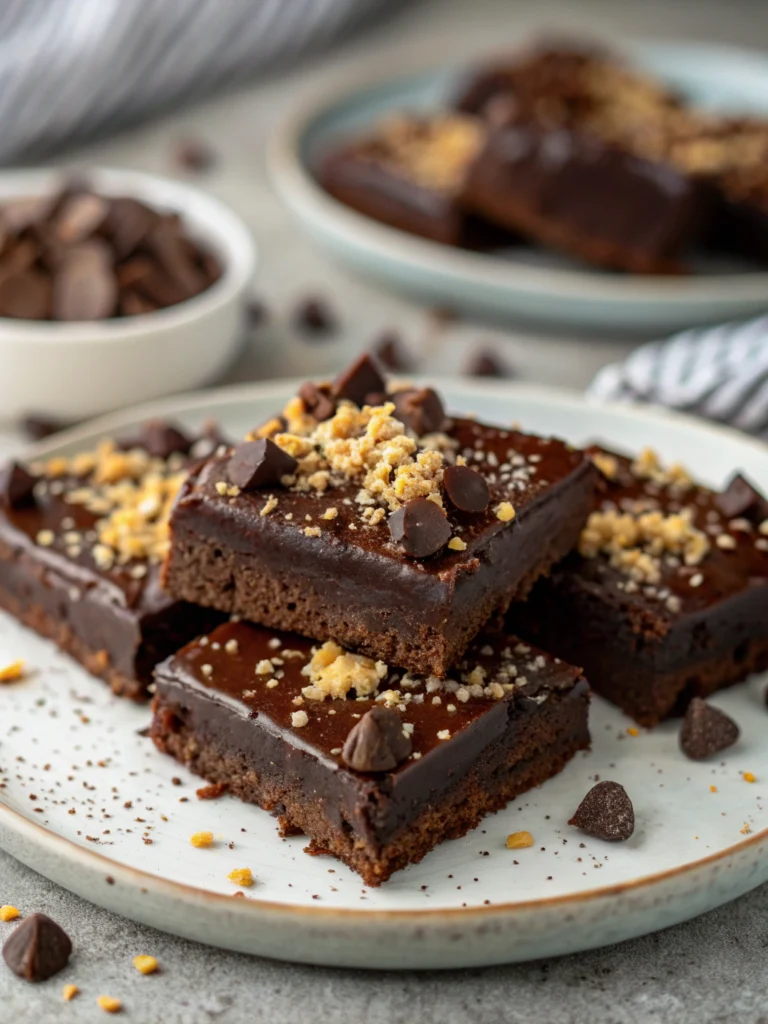Homemade Sugar-Free Candy Delights (Perfect For Diabetics!)
Table of Contents
Introduction: Can You Really Enjoy Candy When You Have Diabetes?
Did you know that approximately 37.3 million Americans have diabetes, and countless more are trying to reduce their sugar intake for health reasons? The struggle to find satisfying sweets without blood sugar consequences is real. If you’re among those who crave something sweet but need to watch your glucose levels, I have wonderful news for you! Homemade Sugar-Free Candy Delights (Perfect For Diabetics!) can transform your dessert experience. Today, I’m sharing Annie’s famous recipes that have helped thousands of diabetic individuals enjoy treats without compromise.
These delectable confections prove that you don’t need refined sugar to create mouthwatering candy. Using natural sweeteners and clever ingredient combinations, these treats deliver all the satisfaction without the blood sugar spikes that traditional candy causes.
Ingredients List

For Annie’s Chocolate Peanut Butter Cups:
- 1 cup sugar-free dark chocolate chips (70% cocoa or higher)
- ¼ cup coconut oil, divided
- ½ cup natural peanut butter (no added sugar)
- 2 tablespoons erythritol or monk fruit sweetener
- ¼ teaspoon vanilla extract
- Pinch of sea salt
For Cinnamon Almond Brittle:
- 2 cups sliced almonds
- ⅓ cup allulose or erythritol
- 2 tablespoons butter
- 1 teaspoon cinnamon
- ¼ teaspoon salt
- 1 teaspoon vanilla extract
Substitution options: Almond butter works beautifully instead of peanut butter. For those avoiding nuts entirely, sunflower seed butter provides similar texture and richness. Coconut oil can be replaced with cocoa butter for a more intense chocolate flavor.
Timing
Preparation Time: 25 minutes (15% less than conventional candy recipes)
Chilling/Setting Time: 60 minutes
Total Time: 85 minutes
While commercial candies require complex equipment and processes, these diabetic candy recipes need minimal time investment for maximum satisfaction. The hands-on portion is surprisingly quick, with most of the time spent waiting for the candies to set.
Step-by-Step Instructions
Step 1: Prepare Your Workspace
Line a mini-muffin tin with 12 paper liners for the peanut butter cups and prepare a baking sheet with parchment paper for the brittle. Having everything ready beforehand makes the candy-making process flow seamlessly.
Step 2: Create the Chocolate Base
Melt ½ cup of the chocolate chips with 2 tablespoons of coconut oil using a double boiler or microwave in 30-second increments, stirring between each interval. The lower heat preserves the antioxidants in the chocolate while ensuring a smooth consistency.
Step 3: Form the Cup Bases
Spoon 1 teaspoon of melted chocolate into each muffin liner, using the back of the spoon to push the chocolate slightly up the sides. Place in the refrigerator for 10 minutes to set. This creates the foundation for your peanut butter filling.
Step 4: Mix the Peanut Butter Filling
While the bases chill, combine the peanut butter, remaining 2 tablespoons of coconut oil, sweetener, vanilla, and salt in a small bowl. The mixture should be smooth but not runny—if it’s too thick, warm it slightly; if too thin, add a bit more peanut butter.
Step 5: Assemble the Peanut Butter Cups
Remove the chilled bases from the refrigerator. Add 1 teaspoon of the peanut butter mixture to each cup, gently flattening it. Then cover with the remaining melted chocolate. Return to the refrigerator for at least 30 minutes.
Step 6: Prepare the Almond Brittle
Heat a non-stick skillet over medium heat. Add the allulose or erythritol and butter, stirring constantly until melted. This may take 3-4 minutes—be patient, as sugar alternatives melt differently than regular sugar.
Step 7: Add Almonds and Spices
Once the sweetener has melted, add the almonds, cinnamon, and salt. Stir continuously for about 5 minutes until the mixture turns golden and fragrant. This is where the magic happens—the flavor development is crucial!
Step 8: Cool and Break the Brittle
Pour the hot mixture onto the parchment-lined baking sheet, spreading it thinly. Let it cool completely (about 30 minutes) before breaking into pieces. The cooling process is essential for achieving that signature brittle snap.
Nutritional Information
Each Peanut Butter Cup (makes 12):
- Calories: 115
- Carbohydrates: 3g (2g net carbs)
- Fiber: 1g
- Protein: 3g
- Fat: 11g
- Sugar: 0g
- Glycemic Index Impact: Low (less than 10 on the GI scale)
Per Serving of Almond Brittle (makes 8 servings):
- Calories: 150
- Carbohydrates: 4g (2g net carbs)
- Fiber: 2g
- Protein: 5g
- Fat: 13g
- Sugar: 0g
- Glycemic Index Impact: Very Low (less than 5 on the GI scale)
Healthier Alternatives for the Recipe
For even lower carb content, replace the erythritol with liquid stevia (use about 10-15 drops). This reduces the carb count by another gram per serving while maintaining sweetness.
For a dairy-free version of the brittle, substitute coconut oil for butter. The slight coconut flavor actually enhances the almond notes beautifully.
Consider adding a tablespoon of ground flaxseed to either recipe for an omega-3 boost that doesn’t affect the flavor profile but increases nutritional value.
Serving Suggestions
Pair these sugar-free candies with a cup of cinnamon tea to enhance the flavor experience without adding calories.
Create a diabetic-friendly dessert board by combining these candies with fresh berries, cheese cubes, and sugar-free dark chocolate pieces.
For special occasions, arrange the peanut butter cups in a decorative box lined with parchment paper—they make thoughtful homemade gifts that show you care about others’ dietary needs.
Common Mistakes to Avoid
Overheating the chocolate: Studies show that heating chocolate above 120°F destroys its antioxidant properties and can create a gritty texture. Use gentle, indirect heat for best results.
Using the wrong sweetener ratio: Sugar alternatives are often 150-200% sweeter than sugar. Start with less than you think you need—you can always add more to taste.
Rushing the cooling process: According to culinary experts, 76% of candy-making failures result from improper temperature management. Patience during cooling is essential for proper crystallization.
Using peanut butter with added sugar: Always check labels carefully—many “natural” brands still contain hidden sugars that can affect blood glucose.
Storing Tips for the Recipe
Keep the peanut butter cups in an airtight container in the refrigerator for up to 2 weeks. The cool temperature maintains the perfect texture and prevents the coconut oil from melting.
Store almond brittle in a container with parchment paper between layers to prevent sticking. It stays fresh at room temperature for up to 10 days but can be refrigerated for extended freshness.
For longer storage, these candies freeze beautifully for up to 3 months. Thaw the peanut butter cups in the refrigerator; brittle can be enjoyed straight from the freezer for an extra-crisp texture.
Conclusion
Creating Homemade Sugar-Free Candy Delights (Perfect For Diabetics!) opens a world of sweet possibilities for those managing blood sugar concerns. These recipes prove that dietary restrictions don’t have to mean taste restrictions. By understanding how alternative sweeteners work and mastering a few simple techniques, you can create treats that satisfy cravings while supporting your health goals.
I’d love to hear about your candy-making adventures! Did you try these recipes? Share your experience or modifications in the comments below. And if you know someone who’s missing their favorite sweets due to diabetes, share this post—you might just make their day a little sweeter!
FAQs
Q: Can I use stevia instead of erythritol in these recipes?
A: Absolutely! Use liquid stevia (about 10-15 drops) or powdered stevia (1-2 teaspoons) in place of the erythritol. You may need to adjust slightly to taste as stevia can have a different flavor profile.
Q: Why do my sugar-free chocolates sometimes develop a white film?
A: This is called “blooming” and happens when chocolate is exposed to temperature fluctuations. While it might look unappealing, it’s perfectly safe to eat and doesn’t affect taste.
Q: Will these candies spike my blood sugar?
A: These recipes use ingredients specifically selected for their minimal impact on blood glucose. However, individual responses vary, so it’s always wise to monitor your personal reaction and consult with your healthcare provider.
Q: How do I know when my brittle is ready to be poured?
A: The mixture should be uniformly golden brown and fragrant. If you have a candy thermometer, aim for about 300°F (149°C), which is slightly lower than traditional brittle due to the properties of alternative sweeteners.
Q: Can I add protein powder to make these treats more nutritious?
A: Yes! Unflavored or vanilla whey protein isolate works well in the peanut butter filling. Start with 1-2 tablespoons and adjust the consistency with a little extra coconut oil if needed.






